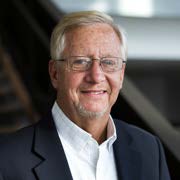Abstract:  Gas turbines for propulsion and for stationary power generation typically burn fuel in a “partially-premixed” mode. The portions of the flames that are premixed may not anchor properly and may lead to combustion instability oscillations, liftoff, flameout and excessive heat transfer. This talk will survey recent advances in premixed turbulent combustion research in the regime of “extreme” turbulence. New measurements are made possible by kilohertz laser imaging diagnostics. Challenges are to extend the studies to highly preheated reactants, elevated pressures and complex (JP-8) fuels. To help develop a physically-accurate combustor design model, laser imaging was used to determine where the chemical reactions occur and whether they should be modeled as flamelets or as distributed reactions. Imaging at 20 kHz was performed to simultaneously quantify the gas temperature, species concentrations (of formaldehyde and OH) and velocity fields in the regime of “extreme” turbulence. New physical processes associated with “extreme” turbulence are discussed.
Gas turbines for propulsion and for stationary power generation typically burn fuel in a “partially-premixed” mode. The portions of the flames that are premixed may not anchor properly and may lead to combustion instability oscillations, liftoff, flameout and excessive heat transfer. This talk will survey recent advances in premixed turbulent combustion research in the regime of “extreme” turbulence. New measurements are made possible by kilohertz laser imaging diagnostics. Challenges are to extend the studies to highly preheated reactants, elevated pressures and complex (JP-8) fuels. To help develop a physically-accurate combustor design model, laser imaging was used to determine where the chemical reactions occur and whether they should be modeled as flamelets or as distributed reactions. Imaging at 20 kHz was performed to simultaneously quantify the gas temperature, species concentrations (of formaldehyde and OH) and velocity fields in the regime of “extreme” turbulence. New physical processes associated with “extreme” turbulence are discussed.
Biosketch: James F. Driscoll is the A.B. Modine Endowed Professor of Aerospace Engineering at the University of Michigan. He applies new laser imaging diagnostics to identify the flame structure within
“extremely” turbulent combustion. The goal is to better understand and model flames within gas turbine engines, scramjets and afterburners. Prof. Driscoll’s research interests include fundamental tudies of turbulent combustion, supersonic and scramjet combustion, hydrogen-oxygen rocket combustion for NASA’s Project Constellation Center at University of Michigan and nitric oxide formation in jet engine combustors. He received his Ph.D. degree in Aerospace and Mechanical Sciences from Princeton University in 1975. He is a Fellow of the American Institute of Aeronautics and Astronautics (AIAA). He has received many awards including the Silver Medal of the Combustion Institute for outstanding paper, best paper awards from AIAA, outstanding faculty and research excellence awards from University of Michigan, AIAA service and leadership award, the Combustion and Propellant career award from the AIAA. He served as an Editor-in-chief of Combustion and Flame, the best journal in the field of combustion, between 2003 and 2009. He has served on the board of directors of the Combustion Institute and is currently the President of the Combustion Institute.